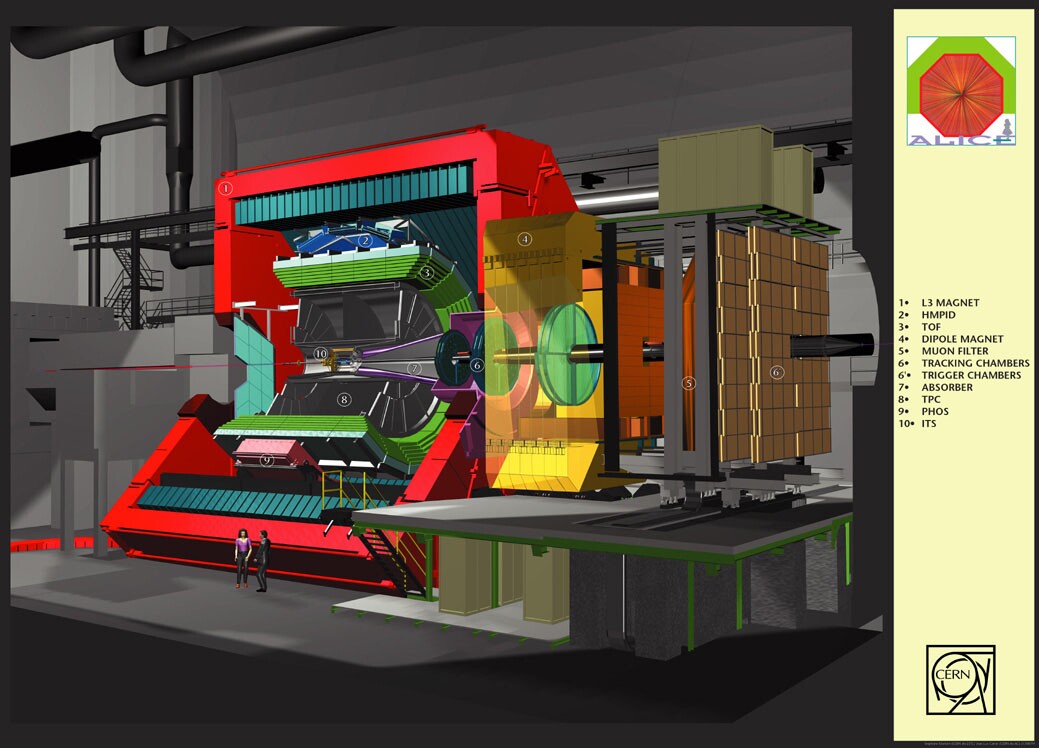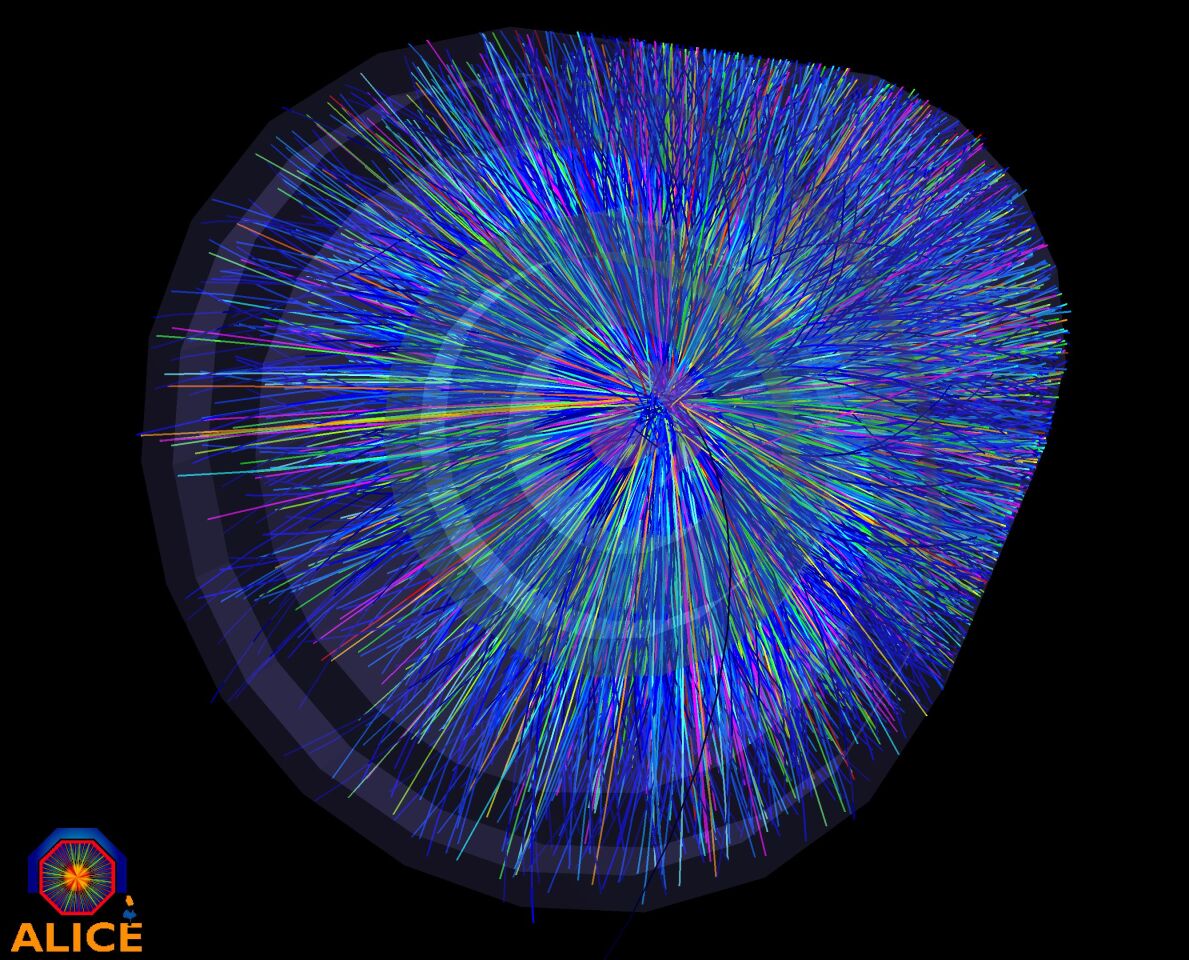Physicists from the ALICE detector team have been colliding lead nuclei together at CERN's Large Hadron Collider (LHC) in an attempt to recreate the conditions in the first few microseconds after the Big Bang. Early results have shown that the quark-gluon plasma created at these energies does not form a gas as predicted, but instead suggest that the very early universe behaved like a hot liquid.
The Large Hadron Collider enables physicists to smash together sub-atomic particles at incredibly high-energies, providing new insights into the conditions present at the beginning of the universe.

ALICE (an acronym for A Large Ion Collider Experiment) researchers have been colliding lead nuclei to generate incredibly dense sub-atomic fireballs – mini Big Bangs at temperatures of over ten million degrees.
Previous research at lower energies had suggested the hot fire balls produced in nuclei collisions behaved like a liquid, yet many still expected the quark-gluon plasma to behave like a gas at these much higher energies.
Additionally, it has been found that more sub-atomic particles are produced in the collision than some theoretical models suggested.
“Although it is very early days we are already learning more about the early Universe,” said Dr David Evans, from the University of Birmingham’s School of Physics and Astronomy, and UK lead investigator at ALICE experiment. “These first results would seem to suggest that the Universe would have behaved like a super-hot liquid immediately after the Big Bang.”

The ALICE experiment aims to study the properties of the state of matter called a quark-gluon plasma. The ALICE Collaboration comprises around 1,000 physicists and engineers from around 100 institutes in 30 countries. During collisions of lead nuclei, ALICE will record data to disk at a rate of 1.2 gigabytes (GB), equivalent to two CDs every second, and will write over two petabytes (two million GB) of data to disk. This is equivalent to more than three million CDs, or a stack of CDs without boxes several miles high!
To process this data, ALICE will need 50,000 top-of-the-range PCs, from all over the world, running 24 hours a day.
The research is funded by the Science and Technology Facilities Council (STFC).
All images courtesy CERN








